Wisdom teeth that are extracted by a dentist or oral surgeon require postoperative care in order to recover completely and quickly. If your mouth and teeth are not cleaned properly, a serious infection or inflammation known as dry socket or alveolar osteitis can develop. Dry socket occurs in about 20% of lower wisdom tooth extractions, so you should take extra precautions after surgery. Simple oral care that does not require much time and effort should be given for at least one week after wisdom teeth are extracted.
Step
Part 1 of 3: Cleaning Teeth
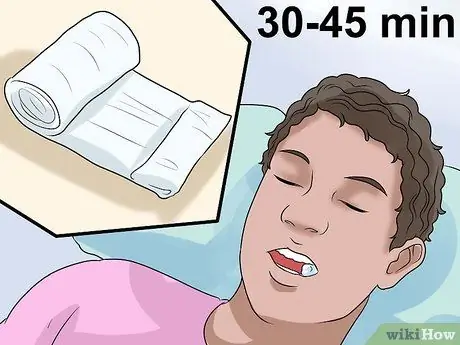
Step 1. Change the gauze as directed by the doctor
After surgery, the doctor will put gauze on the surgery site. You can generally replace the gauze after about 1 hour if necessary. If the blood continues to come out, change your gauze every 30-45 minutes and apply gentle pressure. Blood should not come out more than a few hours after surgery. If the blood continues to come out any longer, contact your dentist or oral surgeon.
Watery blood is normally still drained from the surgical site for 24-48 hours after surgery, with saliva as the main constituent and only a few drops of blood. If the blood that comes out is much more, you should contact a doctor because the bleeding is quite heavy
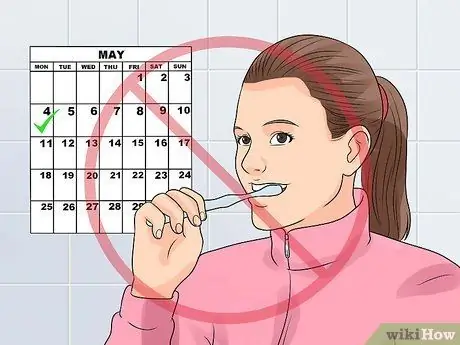
Step 2. Avoid brushing your teeth one day after surgery
Do not brush, spit, or gargle with mouthwash on the first day after surgery as this can interfere with the healing process and lead to problems such as dry sockets or infections.
The first 24 hours after surgery are very important for the healing process. Brushing or flossing in other ways can interfere with sutures or blood clots, delaying the healing process or causing infection
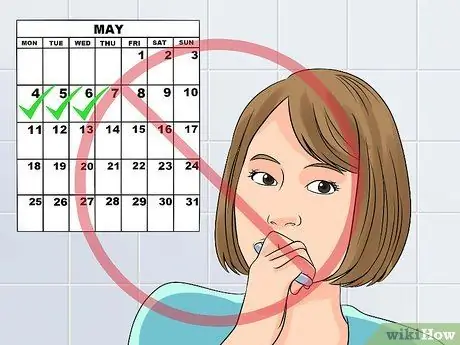
Step 3. Avoid brushing the surgery site for 3 days
Avoid brushing the location of wisdom teeth that have been extracted for 3 days after surgery. Instead, you can rinse your mouth with a solution of cup warm water and a pinch of salt from the first day after surgery.
Do not spit out the mouthwash. You should move your head from right to left so that the water can touch the operation site then tilt your head to remove it
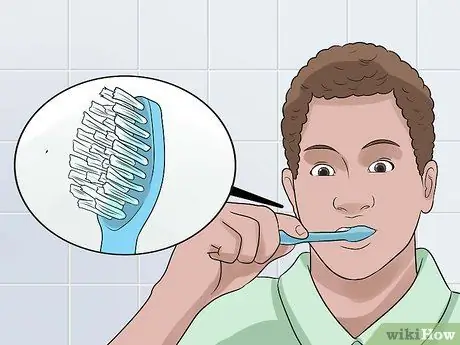
Step 4. Brush the other teeth very gently and carefully
On the day you have surgery, you can brush your teeth very gently. Be sure to avoid the surgery site so it doesn't irritate and the blood clot that protects the part is not damaged.
- Use a soft-bristled toothbrush and gently brush your teeth in a circular motion.
- Do not spit toothpaste out of your mouth for a few days after surgery. Spitting up can interfere with the formation of the blood clots needed to close the wound on the gums. Instead, use a saline solution or an antiseptic mouthwash to gently rinse your mouth, then remove the solution by tilting your head.
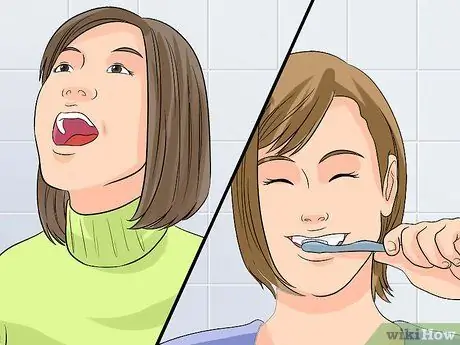
Step 5. Continue brushing and flossing 3 days after surgery
Three days after surgery, you can resume brushing and flossing as usual. Continue to treat the surgical site gently so as not to irritate it.
When brushing your teeth, remember to brush your tongue as well so that food debris and bacteria that can enter the wound on the gums and cause infection can be removed
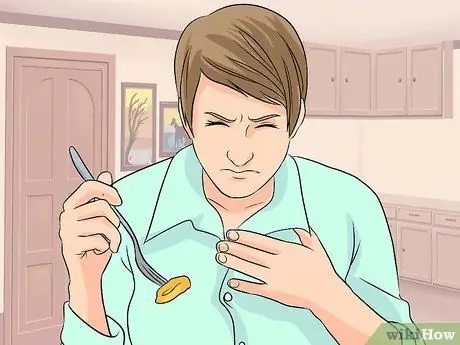
Step 6. Watch out for infections
Following the doctor's advice and maintaining good oral hygiene can minimize the risk of infection. However, you still need to watch for signs of infection and contact your doctor if you find one to avoid postoperative complications.
See your doctor right away if you have difficulty breathing or swallowing, have a fever, notice pus around the surgery site or in your nose, or have swelling that gets worse
Part 2 of 3: Cleaning the Mouth

Step 1. Gargle with salt water
One day after surgery, start using a simple solution of salt water to help keep your mouth and teeth clean between brushings. This step will not only maintain oral hygiene, but also reduce inflammation.
- Make a salt solution by dissolving 1/2 teaspoon of salt in 240 ml of warm water.
- Use this saline solution to gently rinse your mouth for 30 seconds. Don't spit the solution out by spitting it out, just tilt your head and let the solution drain out. Thus, the empty tooth socket will not be disturbed.
- Gargle with a saline solution after every meal to help wash the debris out of your mouth.
- You can also use mouthwash as long as it doesn't contain alcohol, which can irritate the surgical site.

Step 2. Use a dental plaque remover (irrigator) to rinse the inside of the mouth
Your doctor may give you a dental plaque remover, or a small syringe to rinse the inside of your mouth. Use this device after every meal and at bedtime if your doctor recommends it.
- The doctor may prescribe the use of dental plaque remover only in the case of lower wisdom teeth extraction. Make sure to follow the recommendations.
- You can use a simple saline solution to fill this tool.
- Be sure to place the tip of the tool close to the operation site and remove the filled solution. You can also use this tool to rinse your teeth. Even if it hurts a little, maintaining good oral hygiene and the surgical site like this will reduce the chance of an infection or dry socket.

Step 3. Do not use waterpik or water flosser
The water pressure of the device is too great to use after surgery and can irritate the tooth socket and hinder wound healing. Unless specifically recommended by a dentist, do not use a waterpik or water flosser for 1 week after wisdom tooth extraction surgery.
Part 3 of 3: Taking Care of Your Mouth After Wisdom Tooth Extraction

Step 1. Don't use a straw
For a few days after surgery, do not use a straw to drink or eat watery foods such as smoothies because sucking can interfere with the healing process.

Step 2. Drink plenty of water
You should make sure to drink plenty of water after surgery. This will help keep your mouth moist and help prevent dry sockets or infections.
- Avoid caffeinated and carbonated drinks on the first day.
- Avoid alcohol consumption for at least 1 week after surgery.
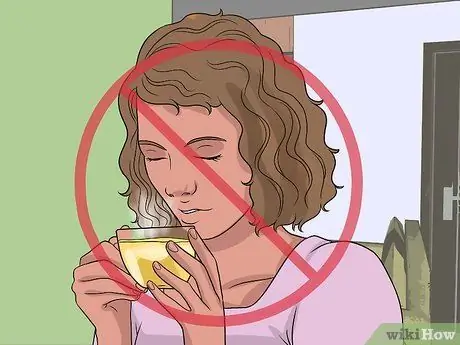
Step 3. Avoid hot drinks
Hot drinks such as tea, coffee, or chocolate can cause the blood clot that has formed in the empty wisdom tooth socket to dislodge. In fact, these blood clots are needed in the healing process.
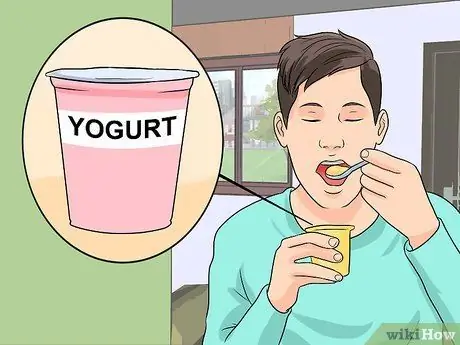
Step 4. Eat soft or liquid foods
Do not eat foods that can get trapped in empty tooth sockets or interfere with blood clotting. Use the other teeth for chewing if you must chew food. This will minimize the amount of food trapped between the teeth and potentially causing infection.
- On the first postoperative day, eat foods such as yogurt or applesauce that won't irritate your mouth or get caught between your teeth and cause infection. Soft oatmeal or cream of wheat are also good choices.
- Avoid hard, chewy, crumbly, very hot, or spicy foods that can irritate the surgical site or become trapped inside the tooth that promotes infection.
- Gargle with a warm saline solution after every meal for the first week after surgery.
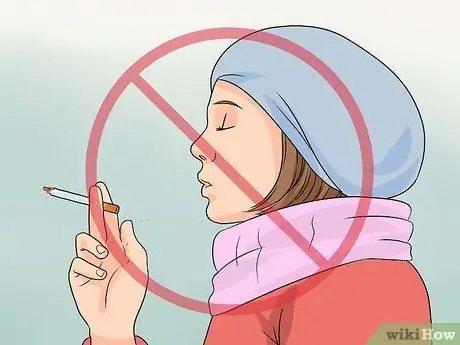
Step 5. Avoid tobacco
If you smoke or chew tobacco, avoid these habits for as long as possible. This will help ensure complete wound healing in a short time and prevent infection and inflammation.
- Tobacco consumption after oral surgery can hinder healing and also increase the risk of complications such as infection.
- If you smoke, wait at least 72 hours before doing it again.
- If you chew tobacco, stop for at least 1 week.
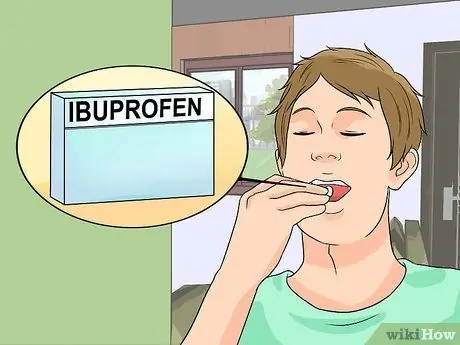
Step 6. Use pain medication
Pain will normally occur for a few days after the wisdom tooth extraction surgery. Use over-the-counter or prescription pain relievers to help relieve the pain and swelling that occurs.
- Take NSAIDs (nonsteroidal anti-inflammatory drugs) such as ibuprofen or naproxen. These medications will help relieve swelling caused by the surgery. You can also take paracetamol, but it doesn't reduce inflammation.
- Your doctor may prescribe a pain reliever if over-the-counter pain relievers can't help you.
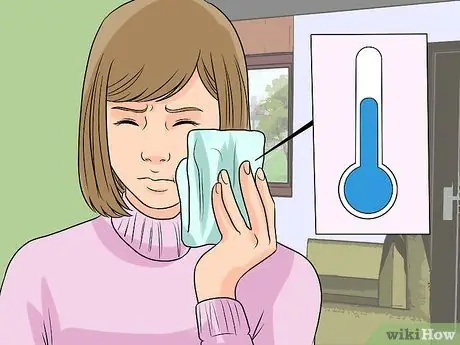
Step 7. Use an ice pack to relieve pain and swelling
You may experience some swelling for a few days after surgery. This is normal, and applying ice to your cheek will help reduce pain and swelling, including those around the teeth.
- Swelling usually subsides within 2-3 days.
- You should rest and avoid strenuous activity or exercise until the swelling subsides.







